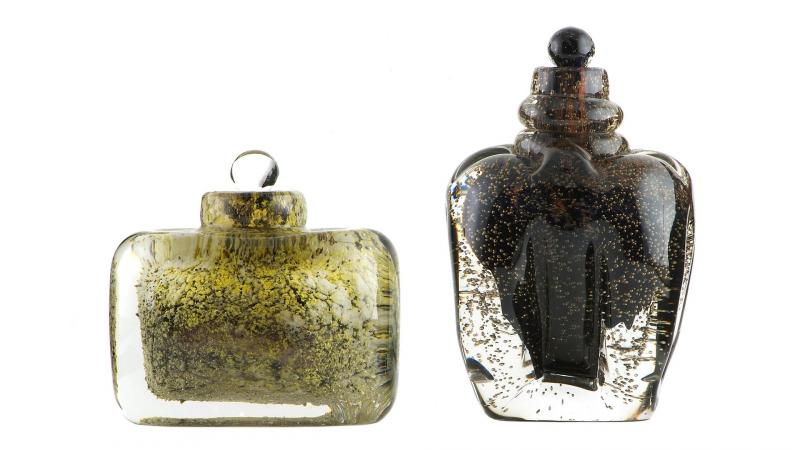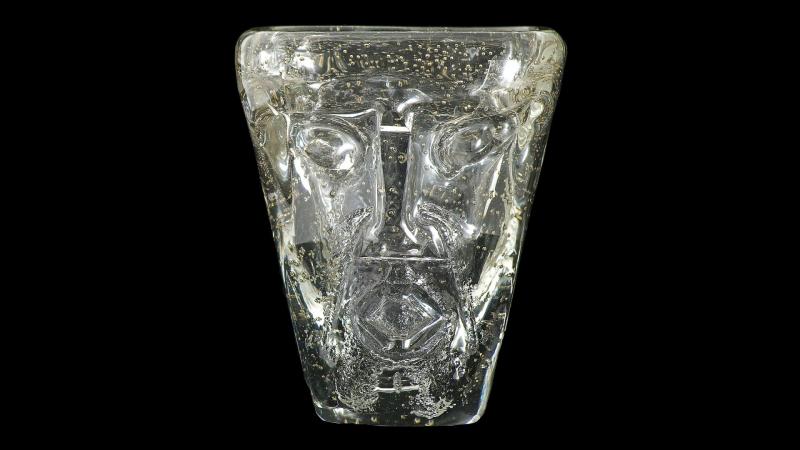A French painter with a passion for fauvism, Maurice Marinot become involved in glass art after 1911; at almost thirty years of age, he decided to quickly learn about glass-blowing and the different traditional and chemical decoration processes, all while creating original pieces of his own. He created bottles, vases, cups and paperweights and managed to overcome the conformist use of glass-working techniques employed by his contemporaries.
He used a massive, thick material, so as to bring out its marbled or spotted abstract inlays in various colours; this was done by adding metal oxide powders to the glass during the blowing process.
The outer surfaces are processed by cutting out geometric shapes, but he also obtains reserved, subdued surfaces through the use of acid. The beautiful bottles, which are closed with a ball-shaped stopper, are encrusted with innumerable small bubbles, which are often gilded, and powders with gradient colours. Other bottles with soft shapes have a more tormented interior, with greyish and blackish streaks of vaporous, bubbled clouds, which are also called "smudges". Exhausted by the energy expended and the difficulty of the tasks he had undertaken in order to give form and life to his creations, Maurice Marinot would return to painting and drawing after 1937, when the Bar-Sur-Seine glassworks, where he worked, were closed.
An artist and craftsman, he added real embellishment to the art of glass-making, working as both a sculptor, through his work with the materials, and a painter and colourist, through his decorative techniques. He had an influence on his contemporaries, but also the rising talents that would flourish throughout the 20th and 21st centuries.
- Home
- The Museum’s collections
- Glass
- Maurice Marinot (1882–1960) and his new glasswork designs

